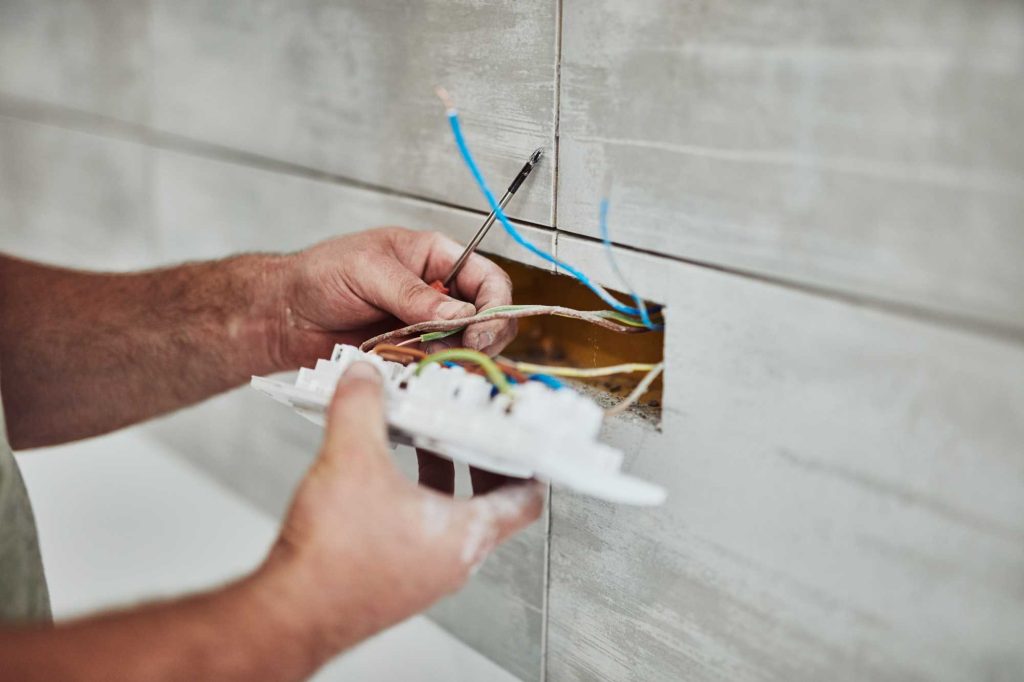North Texas Homeowner’s Guide to Fixing Non-Working Outlets and Faulty Switches
When electrical outlets or switches stop working in your home, it can range from a minor inconvenience to a serious safety concern. At NTX Electric, we’ve been serving homeowners throughout Dallas, Fort Worth, Plano, and surrounding North Texas communities for over 15 years. Our team of licensed electricians has seen firsthand how proper diagnosis of electrical outlet and switch issues can save homeowners time, money, and potential safety hazards. Unlike general handymen who might offer quick fixes, our electricians are trained to identify the root causes of electrical problems and provide lasting solutions that meet or exceed the strict electrical codes of Texas municipalities. We understand that electrical issues can be frustrating and sometimes concerning, which is why we’re committed to providing clear information about common problems and their solutions. This guide will help you understand when you can safely resolve simple outlet and switch problems yourself and when it’s time to call in a professional electrician for more complex issues.

Diagnosing Common Outlet Problems in North Texas Homes
Non-working outlets are among the most frequent service calls we receive from homeowners across the Dallas-Fort Worth metroplex. Before calling an electrician, there are several troubleshooting steps you can safely take:
First, check if the outlet is connected to a GFCI (Ground Fault Circuit Interrupter) that may have tripped. GFCI outlets are commonly found in kitchens, bathrooms, garages, and outdoor areas – locations where water exposure is possible. These safety devices automatically cut power when they detect potential ground faults. If you find a GFCI outlet with a red button extended outward, press the reset button (usually black) to restore power. In many North Texas homes, especially in newer developments in Frisco and McKinney, multiple standard outlets may be wired downstream from a single GFCI outlet, meaning when one trips, several outlets may lose power.
Next, check your electrical panel for tripped circuit breakers. Texas summer heat puts tremendous strain on home electrical systems, often causing breakers to trip when air conditioners run continuously during those 100°+ August days. Look for breakers that are not fully in the “on” position. Reset any tripped breaker by pushing it fully to the “off” position first, then firmly back to “on.”
If neither of these steps resolves the issue, the outlet itself may be faulty. Outlet failures are particularly common in older homes in established neighborhoods like Arlington or Irving, where decades of use can cause internal components to wear out. Signs of a failing outlet include:
- Visible discoloration or scorch marks
- Loose-fitting plugs that fall out easily
- Crackling sounds or burning smells
- Outlets that feel warm or hot to the touch
These symptoms indicate a serious problem that requires professional attention immediately. In the DFW area’s older homes, we frequently find that outlet issues are symptoms of more significant electrical system concerns such as outdated wiring or inadequate electrical panels that no longer meet the demands of modern households.
Switch Troubleshooting: From Simple Fixes to Complex Wiring Issues
Like outlets, switches can fail for various reasons, some simple and others more complex. Here’s how to diagnose common switch problems:
For a switch that doesn’t seem to control anything, the issue might be as simple as a burnt-out light bulb. This happens frequently in rooms with recessed lighting, which is extremely popular in newer North Texas homes. Check all bulbs controlled by the switch, even if they appear intact, as LED and CFL bulbs can fail without visible damage.
If the switch controls a ceiling fan with integrated lights, check if separate switches control the fan and light functions. Many homeowners call us about “broken” switches that are simply controlling the wrong component of their ceiling fixtures.
For switches that feel loose, stuck, or make unusual sounds when operated, the internal mechanism may be failing. Modern “decorator-style” switches found in newer homes typically last 15-20 years, while older toggle switches might last decades longer. However, in North Texas, where air conditioning runs most of the year, switches controlling HVAC systems experience more wear and tend to fail sooner.
Dimmer switches are particularly prone to failure, especially older models that generate significant heat. The extreme temperature variations we experience in DFW can accelerate their deterioration. If your dimmer switch feels hot, buzzes, or provides inconsistent lighting levels, it should be replaced promptly.
When DIY Isn’t Enough: Signs You Need Professional Electrical Service
While simple troubleshooting is appropriate for homeowners, certain scenarios always warrant professional intervention:
Frequent circuit breaker tripping indicates an overloaded circuit, a short circuit, or a ground fault. This is especially common in older North Texas neighborhoods where homes weren’t designed for today’s electrical demands. Professional electricians can perform load calculations to determine if you need additional circuits or panel upgrades.
Burning smells, buzzing sounds, or visible sparks from outlets or switches require immediate professional attention. These symptoms suggest potentially dangerous conditions that could lead to electrical fires – a serious concern during North Texas’ dry seasons when fire risks are already elevated.
Flickering lights throughout multiple rooms may indicate issues with your main electrical service or panel. This problem becomes more common during Dallas-Fort Worth storm seasons when power fluctuations can damage home electrical systems.
Any electrical issues in damp or wet areas need professional assessment. Despite being a primarily hot climate, North Texas experiences intense rainstorms and occasional flooding, particularly in low-lying areas near the Trinity River basin. Water and electricity create dangerous combinations that require expert handling.
If your home has aluminum wiring (common in homes built between 1965 and 1975), any outlet or switch problems should be addressed by professionals familiar with these systems. Several neighborhoods in Richardson, Garland, and parts of Dallas have a high concentration of homes from this era.
Preventative Measures to Avoid Outlet and Switch Problems
Taking proactive steps can help prevent many common electrical issues in your North Texas home:
Schedule regular electrical inspections, especially for homes over 25 years old. The extreme temperature variations we experience in North Texas – from freezing winter storms to triple-digit summer heat – can accelerate the deterioration of electrical components.
Consider upgrading to AFCI (Arc Fault Circuit Interrupter) protected circuits, which provide enhanced protection against electrical fires. While not required in older homes, this upgrade significantly improves safety, especially during our hot, dry summers when fire risks increase.
Replace outdated two-prong outlets with properly grounded three-prong versions. Many historic homes in Dallas neighborhoods like Lakewood or Oak Cliff still have original electrical systems that don’t meet modern safety standards.
Install surge protectors for sensitive electronics, particularly important in North Texas where lightning storms frequently cause power surges, especially during spring storm season.
Need Professional Electrical Help? Contact NTX Electric Today!
While some electrical issues have simple fixes, many require professional diagnosis and repair to ensure safety and compliance with local electrical codes. NTX Electric provides prompt, reliable service for all your electrical needs throughout the Dallas-Fort Worth metroplex.
Your family’s safety is our priority – don’t take chances with electrical problems in your North Texas home! Contact us today!
